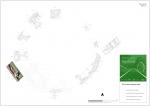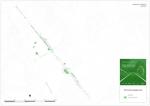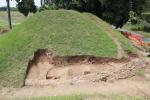Summary (English)
Mapping the Via Appia
2014 Project
The project has been developed by a team from the Dutch Institute in Rome (Jeremia Pelgrom). Funding from the Netherlands Organisation for Scientific Research made it possible to continue surveying the terrain adjacent to this stretch of the via Appia.
Geophysical surveys were carried out by the Libera Università, Amsterdam (Henk Kars and Stevens Soetens).
Other partners in the “Mapping the Via Appia” project are the Archaeological Superintendency for Rome (Rita Paris) and the German Archaeological Institute in Rome (Ortwin Dally).The team extended the trenches and continued the surveying begun in 2011, 2012, and 2013 on the stretch of the via Appia between the modern via Erode Atticus and via del Casal Rotondo (V and VI mile).
The following work was undertaken:
1) Trenches excavated around the two tumuli called the ‘tombs of the Horatii’, dug in order to establish the precise perimeter and chronology of the north tumulus and the precise nature of the interventions carried out by Luigi Canina in the 19th century.
2) A trench in front of the north tumulus in the space between the Via Appia and the tomb itself.
3) Inventory of the archaeological finds along this stretch of the Appia.
4) 3D reconstruction based on digital photographs.Several trenches were dug round the northern tumulus including one quite large one on the south-west side (1; figs. 1-2), with the aim of establishing the plan of its foundations and perimeter wall. This trench was a continuation of the 2013 trench dug to the rear of the tumulus with respect to the via Appia.
Several sections of the original tumulus’ perimeter wall were identified together with 12 semicircular internal walls, four or five more than those shown in Luigi Canina’s reconstructions. The heads of four radial walls running to the centre of the tumulus were also documented, which had not appeared on any plans or reconstructions to date.
No evidence was found that could be used to establish a date for the construction.
The investigation of the tumulus provided confirmation of what was suggested in 2013 regarding Canina’s quite extensive interventions in the 1950s. Canina had raised the monument about four metres above ground level and moved it several metres to the east, that is towards the via Appia with respect to its original position.In trench 2, dug between the tumulus and the via Appia, part of the ancient sidewalk, probably on two levels was uncovered.
The inventory of the archaeological remains (3; fig.3) continued work done between 2009 and 2013 and involves the mapping of monuments using DGPS, photographic and drawn documentation.
The primary aim is to create an archaeological map of the area in question, which may serve as the basis for a more detailed analysis of this stretch of the via Appia in the suburbium of Rome.The 3D documentation (4) of the monuments adjacent to the via Appia itself as well as those in the hinterland, begun in 2013 and refined this season, is also linked to this work. It will be put into a 3D GIS system which is currently being developed, in the hope that it will be used as a base for both scientific and popular visualisations of this part of the via Appia.
- Stephan T.A.M. Mols - Radboud University Nijmegen
- Eric Moormann - Radboud University Nijmegen
- Christel Veen - Radboud University Nijmegen
- Jeremia Pelgrom - Reale Istituto Olandese a Roma
Director
Team
Research Body
- Radboud University Nijmegen
- Reale Istituto Olandese a Roma
Funding Body
- Netherlands Organization for Scientific Research






![Download [PDF]](/excavation/skins/fasti/images/results/download_sml.png)

